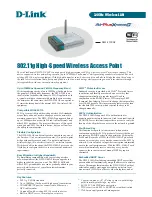
Page 37 of 130
If binding posts are labelled, they just need to be counted. If they are not labelled, then you need to use
what you learned about color coding. You need to correlate the pair count to where the color codes
would be.
On typical 145B aerial terminals, use odd – even counting. On one side, the binding posts(BP) will count
BP 1,3, 5 and the other BP 2,4 6. In terms of color coding, this will be White – Black, White – Green,
White – Slate on the odd side and White – Orange, White – Brown and Red-Black on the even side. It is
good to know what side of the terminal your BP is on when you set up a ladder on a pole.
Feeder and distribution SAC modules will be
marked in 25-pair increments.
1.5.2 Clear Capping
Clear capping helps maximize the stability and speed capabilities of the circuit. A bridged tap is a portion
of a cable pair connected to a circuit that is not part of the useful path.
Clear capping is the removal of bridged taps going to the field side of the customer’s drop pedestal or
aerial terminal. It is the technician’s responsibility to clear cap on all repairs a
nd installs for (HSIA and
IPTV).
When the field side of the cable is removed (clear capped) and tests still show a bridged tap, then these
are BEFORE the drop pedestal. A tech should email CAST ACE with the particulars so they can analyze
the counts to look for opportunities to cut out large groups of bridged taps.
Clear capping the cable pair and removing all bridged taps before the drop pedestal or aerial terminal
removes any reflection of the signal caused by the extra cable. A reflection on the line is similar to that
of an echo of the signal, and a modem
cannot
tell the difference between the original and echoed signal.
The modem
cannot
sync or creates errors. The longer the bridged tap, the fainter the echo. Our modems
are powerful enough to accurately use the closer signal and ignore the echo. Short bridged taps will
create service outages very quickly. This cable grooming is required on both aerial and buried terminals.
To clear cap, identify the C.O. side carrying the dial tone and the pair going to the terminal block or fuse
link. Use Scotchlok connectors and correct tool to connect these two pairs, not pliers. Cut off the
remaining field side pair(s) going to terminals past yours. There may be more than one field side pair.
You should endeavor to keep the cut-off pair visible while keeping the terminal neat and tidy.
Do NOT connect the wires of the field side pair together with an electrical connection (eg ScotchlokTM
UY) as the practice has the potential to impact higher data frequencies.
In some compounds, the Red ScotchlokTM UCC connector is available. It is designed to hold the pair
together but not make an electrical connection. It is acceptable to use this connector instead of simply
twisting back the opened wires.
When you write off the order or trouble on completion, note in FITS that you have clear capped the pair
and in which terminal it was done. This helps technicians who may have to fix or recover the pair in the
future.
















































